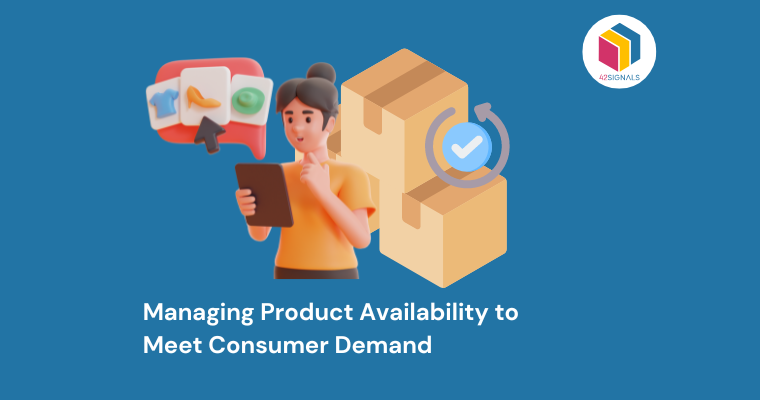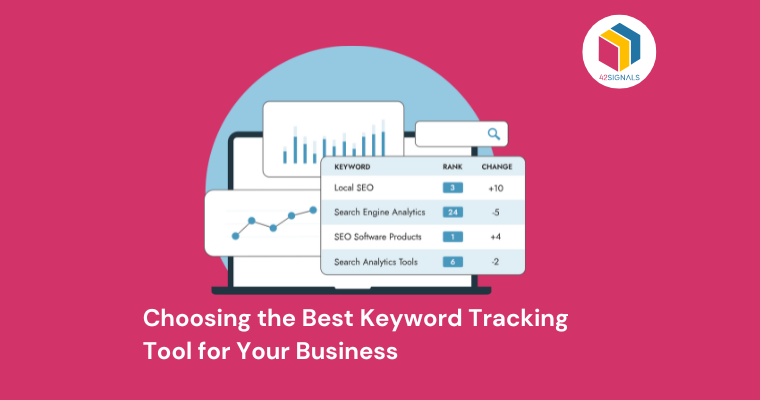Pricing is a critical component of any successful ecommerce business. It can make or break your business, and it is essential to set the right price to attract and retain customers. eCommerce Pricing strategies should be continuously optimized to stay competitive and increase sales.
According to a study conducted by BigCommerce, 87% of customers are influenced by pricing when making a purchase online. Therefore, setting the right price can significantly impact your conversion rate and overall sales.
Whether you are a new ecommerce business or an established one, there is always room for improvement when it comes to pricing strategies. So, let’s dive in and explore ways to supercharge your ecommerce sales through pricing.
Why is Competitive Analysis Crucial for Your Ecommerce Pricing
Competitive analysis is an essential aspect of pricing strategy. It involves understanding the market, identifying competitors, and analyzing their pricing strategies to determine how to price your products competitively. Without competitive analysis, you may not be able to determine the right price for your products, which can negatively impact your sales and profitability.
To conduct a competitive analysis, you need to start by identifying your competitors. This involves researching other businesses that offer products similar to yours. Once you have identified your competitors, you can analyze their pricing strategies by looking at their product pricing, discounts, and promotions.
You should also consider the value that your product offers in comparison to your competitors. For example, if your product offers unique features or benefits, you may be able to charge a higher price. On the other hand, if your product is similar to your competitors’ products, you may need to price it lower to remain competitive.
Another important factor to consider is your target market. You should research your target market’s buying behaviors, preferences, and price sensitivity. This information can help you determine the right price for your products that will appeal to your target market.
Furthermore, it is crucial to keep up with changes in the market and adjust your pricing strategy accordingly. For example, if a new competitor enters the market and offers similar products at a lower price, you may need to adjust your pricing strategy to remain competitive.
Strategies to Stand Out in a Crowded Market
In a crowded market, it can be challenging to differentiate your product from your competitors. One strategy that can help you stand out is by differentiating your product through pricing. By offering a unique pricing strategy, you can attract customers and increase sales. Here are some pricing strategies that can help you differentiate your product in a crowded market.
- Price Skimming: Price skimming involves setting a high price for a new product and gradually lowering the price as demand decreases. This works best for products that offer unique features or benefits that are not offered by competitors. Setting a high price can attract early adopters who are willing to pay a premium for your product.
- Penetration Pricing: Penetration pricing includes setting a low price for a new product to attract customers and gain market share. This strategy works best for products that are similar to those offered by competitors. A lower price can entice customers to try your product over your competitors.
- Bundling: Bundling involves offering multiple products or services together at a discounted price. This strategy works well for products that can be combined with other products or services to create a unique value proposition. Offering a bundled package at a discounted price, can help entice customers to purchase more than one product or service.
- Premium Pricing: Premium pricing involves setting a higher price for a product to convey a sense of exclusivity and luxury. This strategy works well for products that offer a unique or high-quality experience. By setting a premium price, you can attract customers who value luxury and exclusivity.
- Psychological Pricing: Psychological pricing involves setting prices that appeal to customers’ emotions and perceptions. For example, setting a price that ends in .99 instead of a whole number can create the perception of a lower price. This strategy works well for products that appeal to customers’ emotions, such as luxury or gift items.
- Dynamic Pricing: Dynamic pricing involves adjusting prices based on changes in supply and demand. This strategy works well for products that are in high demand or have fluctuating costs. By adjusting prices in real-time, you can optimize revenue and maximize profits.
- Freemium Pricing: Freemium pricing involves offering a basic version of a product or service for free, with the option to upgrade to a premium version for a fee. This strategy works well for products that offer a unique value proposition or have high switching costs. By offering a free version, you can attract customers who may not have otherwise considered your product.
- Value-Based Pricing: Value-based pricing involves setting prices based on the perceived value of a product or service to the customer. This strategy works well for products that offer unique benefits or solve a specific problem. By focusing on the value that your product provides, you can charge a premium price and attract customers who are willing to pay for that value.
There are many pricing strategies to consider when differentiating your product in a crowded market. Selecting a pricing strategy that aligns with your product’s unique value proposition and your target market’s preferences, can lead to increase sales and generate goodwill. It’s important to test and optimize your pricing strategy over time to ensure that it continues to drive results.
Dynamic Pricing: The Benefits and Risks of Real-time Price Adjustments
Real-time price adjustments based on changes in supply and demand is the fundamental concept behind dynamic pricing. By using real-time data to make pricing adjustments, businesses can optimize revenue and maximize profits.
One of the primary benefits of dynamic pricing is that it allows businesses to respond to changes in supply and demand quickly. For example, if a product is in high demand, a business can raise the price to maximize profits. On the other hand, if a product is not selling well, a business can lower the price to attract customers and increase sales.
Dynamic pricing can also aid businesses in maintaining their competitiveness. By keeping an eye on the prices offered by their competitors and making necessary adjustments to their own pricing, businesses can ensure that they are providing customers with the best possible value.
However, there are also risks associated with dynamic pricing. One risk is that customers may perceive price changes as unfair or manipulative. For example, if a customer sees that a product’s price has increased since their last purchase, they may feel like they are being taken advantage of.
Another risk is that dynamic pricing can lead to price wars between competitors. If one business lowers its prices, other businesses may feel pressured to lower their prices as well, leading to a race to the bottom.
Despite these risks, many businesses have found success with dynamic pricing. For example, airlines and hotels frequently use dynamic pricing to adjust prices based on demand. Online retailers and ecommerce businesses also use dynamic pricing to adjust prices in real-time based on factors such as competitor prices, customer demographics, and even weather conditions.
However, it is important for businesses to weigh the benefits and risks of real-time price adjustments and carefully consider how they implement dynamic pricing to avoid any negative impact on customer satisfaction or brand reputation.
Behavioral Pricing: Incorporating Customer Behaviour Data into Pricing Strategies
Behavioural pricing is a pricing strategy that involves incorporating customer behaviour data into pricing strategies. With the help of customer behaviour data, businesses can identify patterns and adjust their pricing strategies accordingly to encourage desired customer behaviours and optimize revenue.
One way to incorporate customer behaviour data into pricing strategies is through personalized pricing. Personalized pricing is a pricing strategy that considers a customer’s past purchases, browsing history, and other data points to set prices. The idea behind this approach is that by tailoring prices to individual customers, businesses can encourage repeat purchases and boost customer loyalty.
Netflix is an example of a company that uses personalization by offering different plans based on customer needs and preferences. For example, customers can choose from different plans based on the number of simultaneous streams and the quality of video playback. By offering different plans at different price points, Netflix can appeal to a wider range of customers and increase revenue.
Another way to use behavioural pricing is through tiered pricing. Tiered pricing involves offering different price points for different levels of service or features. For example, a software company may offer a basic plan with limited features at a lower price point, while offering a premium plan with more features at a higher price point. By offering customers a choice of different price points, businesses can appeal to a wider range of customers and increase revenue.
One example of a company using behavioural pricing combined with dynamic pricing is Amazon, which uses dynamic pricing to adjust prices in real-time based on customer behaviour data. For example, if a customer has viewed a product multiple times but has not made a purchase, Amazon may offer a lower price to incentivize the customer to make a purchase.
Price Optimization Strategies: Using Data, Analytics and Tools to Determine the Right Price Points for Your Products.
Price optimization is the process of determining the right price point for a product to maximize revenue and profit. Price optimization strategies involve using data, analytics, and ecommerce analytics tools to analyze customer behaviour and market trends, and to determine the optimal price point for a product.
One way to optimize prices is through market research. Market research involves gathering data on customer behaviour, preferences, and purchasing habits to understand how customers perceive the value of a product. By analyzing this data, businesses can determine the optimal price point for a product that maximizes revenue and profit.
Another way to optimize prices is through data analytics. Data analytics involves analyzing customer behaviour data, sales data, and other data points to identify patterns and trends that can inform ecommerce pricing strategies and decisions. For example, businesses can use data analytics to identify which products are selling well at certain price points and adjust prices accordingly.
Ecommerce analytics tools can also be used to optimize prices. These tools provide businesses with real-time data on customer behaviour, sales, and other metrics, allowing businesses to adjust prices in real-time based on market conditions and customer preferences.
One example of a company using price optimization strategies is Uber, which uses dynamic pricing to adjust prices in real-time based on market demand. During times of high demand, such as during peak hours or in busy areas, Uber may increase prices to incentivize drivers to pick up passengers. By using data analytics to analyze market trends and customer behaviour, Uber can optimize prices to maximize revenue and profit.
Conclusion
Pricing is vital for a successful ecommerce business, affecting customer purchases and sales. To stay competitive, ecommerce companies must continually optimize their pricing strategies through competitive analysis and understanding their target market. Differentiating products through pricing and implementing dynamic pricing can optimize revenue and profits. However, dynamic pricing also poses risks such as customer backlash and loss of trust. Businesses must select ecommerce pricing strategies that aligns with their value proposition and target market’s preferences, test and optimize it over time.





